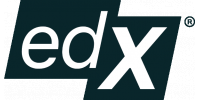- Self-paced
- Free Access
- Fee-based Certificate
Data Structures: An Active Learning Approach
You can't access an archived course
- 10 Sequences
- Intermediate Level
Course details
Syllabus
- 1.1 Welcome to Data Structures!
- 1.2 Tick Tock, Tick Tock
- 1.3 Classes of Computational Complexity
- 1.4 The Fuss of C++
- 1.5 Random Numbers
- 1.6 Bit-by-Bit
- 1.7 The Terminal-ator
- 1.8 Git: the "Undo" Button of Software Development
Module 2: Introductory Data Structures
- 2.1 Array Lists
- 2.2 Linked Lists
- 2.3 Skip Lists
- 2.4 Circular Arrays
- 2.5 Abstract Data Types
- 2.6 Deques
- 2.7 Queues
- 2.8 Stacks
- 2.9 And the Iterators Gonna Iterate-ate-ate
Module 3: Tree Structures
- 3.1 Lost in a Forest of Trees
- 3.2 Heaps
- 3.3 Binary Search Trees
- 3.4 BST Average-Case Time Complexity
- 3.5 Randomized Search Trees
- 3.6 AVL Trees
- 3.7 Red-Black Trees
- 3.8 B- Trees
- 3.9 B+ Trees
Module 4: Introduction to Graphs
- 4.1 Introduction to Graphs
- 4.2 Graph Representations
- 4.3 Algorithms on Graphs: Breadth-First Search
- 4.4 Algorithms on Graphs: Depth-First Search
- 4.5 Dijkstra's Algorithm
- 4.6 Minimum Spanning Trees: Prim's and Kruskal's Algorithms
- 4.7 Disjoint Sets
Module 5: Hashing
- 5.1 The Unquenched Need for Speed
- 5.2 Hash Functions
- 5.3 Introduction to Hash Tables
- 5.4 Probability of Collisions
- 5.5 Collision Resolution: Open Addressing
- 5.6 Collision Resolution: Closed Addressing (Separate Chaining)
- 5.7 Collision Resolution: Cuckoo Hashing
- 5.8 Hash Maps
Module 6: Implementing a Lexicon
- 6.1 Creating a Lexicon
- 6.2 Using Linked Lists
- 6.3 Using Arrays
- 6.4 Using Binary Search Trees
- 6.5 Using Hash Tables and Hash Maps
- 6.6 Using Multiway Tries
- 6.7 Using Ternary Search Trees
Module 7: Coding and Information Compression
- 7.1 Return of the (Coding) Trees
- 7.2 Entropy and Information Theory
- 7.3 Honey, I Shrunk the File
- 7.4 Bitwise I/O
Module 8: Conclusions
- 8.1 Summaries of Data Structures
Prerequisite
- Reading and understanding pseudocode
- Performing time-complexity analysis using Big-O notation
- Working with basic probabilities
- Following formal mathematical proofs
- Programming in either C++ or Python
Instructors
Niema Moshiri
Ph. D. Student
The University of California, San Diego
Christine Alvarado
Associate Teaching Professor, Computer Science and Engineering
The University of California, San Diego
Liz Izhikevich
M.S. Student, Computer Science and Engineering
The University of California, San Diego
Editor

Platform
Harvard University, the Massachusetts Institute of Technology, and the University of California, Berkeley, are just some of the schools that you have at your fingertips with EdX. Through massive open online courses (MOOCs) from the world's best universities, you can develop your knowledge in literature, math, history, food and nutrition, and more. These online classes are taught by highly-regarded experts in the field. If you take a class on computer science through Harvard, you may be taught by David J. Malan, a senior lecturer on computer science at Harvard University for the School of Engineering and Applied Sciences. But there's not just one professor - you have access to the entire teaching staff, allowing you to receive feedback on assignments straight from the experts. Pursue a Verified Certificate to document your achievements and use your coursework for job and school applications, promotions, and more. EdX also works with top universities to conduct research, allowing them to learn more about learning. Using their findings, edX is able to provide students with the best and most effective courses, constantly enhancing the student experience.

